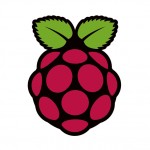The first 10,000 Raspberry Pis will be coming off the assembly line in the next few weeks. What’s a Raspberry Pi, you ask?
It’s a little $25 single-board computer that’s about as powerful as a typical smartphone. The project is the brainchild of Eben Upton of Cambridge University who co-founded the Raspberry Pi Foundation. The foundation is a registered charity in the U.K.
While the first batch of Raspberry Pis are expected to be snatched up by hackers, computer geeks and electronics hobbyists, the ultimate aim of the project is to get these cheap little computers into the hands of schoolkids.
Most primary and secondary school computer education consists of learning how to use Microsoft Office and other proprietary software programs. Kids are being taught how to be users rather than creators of software.
One commentator on BBC Radio Four’s Material World program likened the current computer curriculum in the U.K. as being similar to the high school typing classes of old. My sense is that it’s not much different in Canada.
The hope is that through the Raspberry Pi, students will once again start learning about how computers work and how to program. I say “again” because when I think back to my high school computer training back in the punch card days of the 1970s, I was learning the rudimentary basics of programming. While I never became a programmer, what I learned back then helped me for the rest of my life.
The low cost of the Raspberry Pi means that parents won’t have to worry about their children “breaking” the family computer by experimenting.
It’s designed to run the free software GNU/Linux operating system. The Debian, Fedora and Arch GNU/Linux distributions have already been ported to work on the Raspberry Pi. I’ve also seen a recent YouTube video of the free software XBMC media centre hub running video that they claim is as good as what you’d get on an iPhone 4S.
For those of you interested in the geeky side of these little machines, they run on 700 Mhz. “ARM” processors. The basic model has 128 MB of RAM, an onboard graphics chip capable of 1080p video, video outputs using either RCA or HDMI cables, a standard audio jack, and an SD/MMC card slot for data storage.
The pricier $35 model has a second USB port, onboard RJ45 network jack and 256 MB of RAM.
It also can easily be connected to other types of electronic devices and gizmos like the popular “Arduino” board used by many electronics hobbyists.
The Raspberry Pi may not revolutionize computer education, but it does open the door to doing things in ways that the tech giants like Microsoft have long discouraged.
In the video below, Eben Upton of the Raspberry Pi Foundation is interviewed at CES 2012 held in January in Las Vegas.



